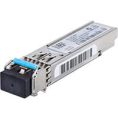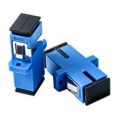SFP transceivers are commonly used by people to connect network devices and cables. However, choosing the right SFP modules for your network is crucial for ensuring optimal performance and compatibility, this article will assist you in choosing an optical module that offers a combination of high compatibility and cost-effectiveness.
Understand your specific requirements:
Speed and data rate:
SFP modules come in various speeds, from 100 Mbps to 100 Gbps. Match the transceiver speed to the capabilities of your network devices and the desired data transfer rate.
Cisco GLC-EX-SMD 1000BASE-EX SFP
Cisco QSFP-100G-LR4-S 100G QSFP
Cisco QDD-400G-DR4-S 400G QSFP-DD
Transmission distance:
Different SFP modules are suited for different distances. Short-range transceivers (up to a few kilometers) are typically used for within-building connections, while long-range ones (up to 100km or more) are ideal for outdoor deployments.
Huawei eSFP-GE-SX-MM850 GE 0.5km SFP
Huawei OSX010000 10G 10km SFP+
Huawei SFP-25G-LR 25G 10km SFP28
Huawei QSFP-40G-SR4 40G 015km QSFP+
Huawei QSFP28-100G-LR4 100G 10km QSFP28
Fiber type:
SFP modules work with either single-mode or multi-mode fiber optic cables. Single-mode fibers are thinner and support longer distances, while multi-mode fibers are thicker and better for shorter distances. Choose the type that aligns with your cabling infrastructure.
Consider compatibility:
Switch compatibility:
Compatibility issues can lead to connectivity problems and impact overall network performance. Ensure the SFP transceiver is compatible with your network switch brands and other equipment. To verify device compatibility, you can check the manufacturer’s specifications or consult the vendor for recommended models.
Standards compliance:
Look for SFP modules that comply with relevant industry standards like IEEE or SFP+. This ensures proper functionality and interoperability with other devices.
Additional factors:
Wavelength:
Different SFP modules operate at different wavelengths, depending on the fiber type and transmission distance, make sure you use the right wavelengths on each side, otherwise, the transmission will fail. Choose the appropriate wavelength for your specific setup.
Power consumption:
SFP modules come in various power consumption levels. Consider this if energy efficiency is a concern, especially for large deployments.
Operating temperature:
The operating temperature range is a critical consideration, especially in environments with extreme temperature variations. Choose a transceiver with an operating temperature range that suits your environment. Industrial-grade SFPs are suitable for extreme temperatures.
By carefully considering these factors, you can choose the suitable SFP transceivers for your network and ensure smooth, reliable operation. If you’re unsure about any aspect of choosing SFP transceivers, consulting with sales@fiberolt.com, our technical will provide expert advice and help you select the best options for your specific needs.





















